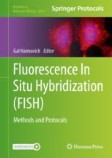Search
Search Results
-
Split luciferase-based assay to detect botulinum neurotoxins using hiPSC-derived motor neurons
Botulinum neurotoxins (BoNTs) have been widely used clinically as a muscle relaxant. These toxins target motor neurons and cleave proteins essential...

-
Dual-Luciferase Reporter Assay for Prescreening CRISPR (d)Cas9-Mediated Epigenetic Editing on a Plant Promoter Using Human Cells
Epigenetic editing, also known as EpiEdit, offers an exciting way to control gene expression without altering the DNA sequence. In this study, we...
-
A Luciferase Imaging-Based Assay for Studying Temperature Compensation of the Circadian Clock
The pace of circadian rhythms remains relatively unchanged across a physiologically relevant range of temperatures, a phenomenon known as temperature...
-
LuBiA (Luciferase-Based Binding Assay): Glowing Peptides as Sensitive Probes to Study Ligand-Receptor Interactions
The quantitative and qualitative biochemical description of molecular interactions is fundamental to the study of ligand/receptor pairs and their...
-
A self-assembling split Nano luciferase-based assay for investigating Pseudomonas syringae effector secretion
Many Gram-negative pathogens employ the type III secretion system (T3SS) to deliver effector proteins into host cells, thereby modulating host...

-
Multiplex Hextuple Luciferase Assaying
We recently expanded the commonly used dual luciferase assaying method toward multiplex hextuple luciferase assaying, allowing monitoring the...
-
Quantification of Xylem-Specific Thermospermine-Dependent Translation of SACL Transcripts with Dual Luciferase Reporter System
Thermospermine (Tspm) is a polyamine found to play a crucial role in xylem development in Arabidopsis thaliana. Tspm promotes the translation of the...
-
Screening of Actinobacterial Extracts/Compounds for Antimycobacterial Activity by Luciferase Reporter Phage (LRP) Assay
Actinomycetes were tested for antimicrobial and antimycobacterial activity with less known habitats. Crude extracts have been evaluated against...
-
Verification of CRISPR/Cas9 Activity In Vitro via SSA-Based Dual-Luciferase Reporter System
AbstractThe CRISPR/Cas9 technique has emerged as a powerful and promising tool for precise genomic integration, which applied to various cell types...

-
Monitoring of the Heat Shock Response with a Real-Time Luciferase Reporter
The heat shock response (HSR) is a cellular mechanism for counteracting acute proteotoxic stress. In eukaryotes, transcriptional activation of the...
-
Split-Luciferase Complementation for Analysis of Virus–Host Protein Interactions
Productive viral infection entails highly regulated and sequential protein–protein interactions between viral factors and between virus and host...
-
Rapid Assessment of Neutralizing Antibodies Using Influenza Viruses with a Luciferase Reporter
Influenza viruses cause acute respiratory infections, especially in the autumn–winter period. They are characterized by a high mutation frequency and...

-
Analysis of SPI-1 Dependent Type III Secretion and Injection Using a NanoLuc Luciferase-Based Assay
Studies of bacterial protein secretion have relied on a variety of reporters that allow the tracking of secreted proteins. However, the lack of truly...
-
CRISPR-Based Split Luciferase as a Biosensor for Unique DNA Sequences In Situ
To date, CRISPR-based DNA targeting approaches have typically used fusion proteins between full fluorescent reporters and catalytically inactive Cas9...
-
MitoLuc: A Luminescence-Based Assay to Study Real-Time Protein Import into Mitochondria
All but a few mitochondrial proteins are translated into the cytosol and imported in via complicated and varied pathways. These processes occur over...
-
Detecting Protein–Protein Interactions Using Bimolecular Fluorescence Complementation (BiFC) and Luciferase Complementation Assays (LCA)
In multicellular organisms, establishing the full body plane involves cell-cell signaling where protein associations are important for the diverse...
-
A Fluorescence-Based Reporter Gene Assay to Characterize Nuclear Receptor Modulators
Reporter gene assays are critical tools of nuclear receptorNuclear receptor (NR) research for characterizing the effects of ligands on nuclear...
-
Evaluating Single-Nucleotide Variants in MicroRNA Targeting Sites and Mature MicroRNA In Vitro Cell Culture by Luciferase Reporter Gene Assays
MicroRNAs (miRs) are small non-coding RNAs of 21–24 nucleotides in length that modulate gene expression by targeting the untranslated region (UTR) of...
-
Luciola mingrelica firefly luciferase as a marker in bioluminescent immunoassays
Chemical modification of the enzymes with biospecific macromolecules is used in various fields of biotechnology to impart new functions or improve...

-
Synthetic Assembly DNA Cloning of Multiplex Hextuple Luciferase Reporter Plasmids
Multiplex hextuple luciferase assaying allows monitoring the activity of five experimental pathways against one control at the same time. To perform...
